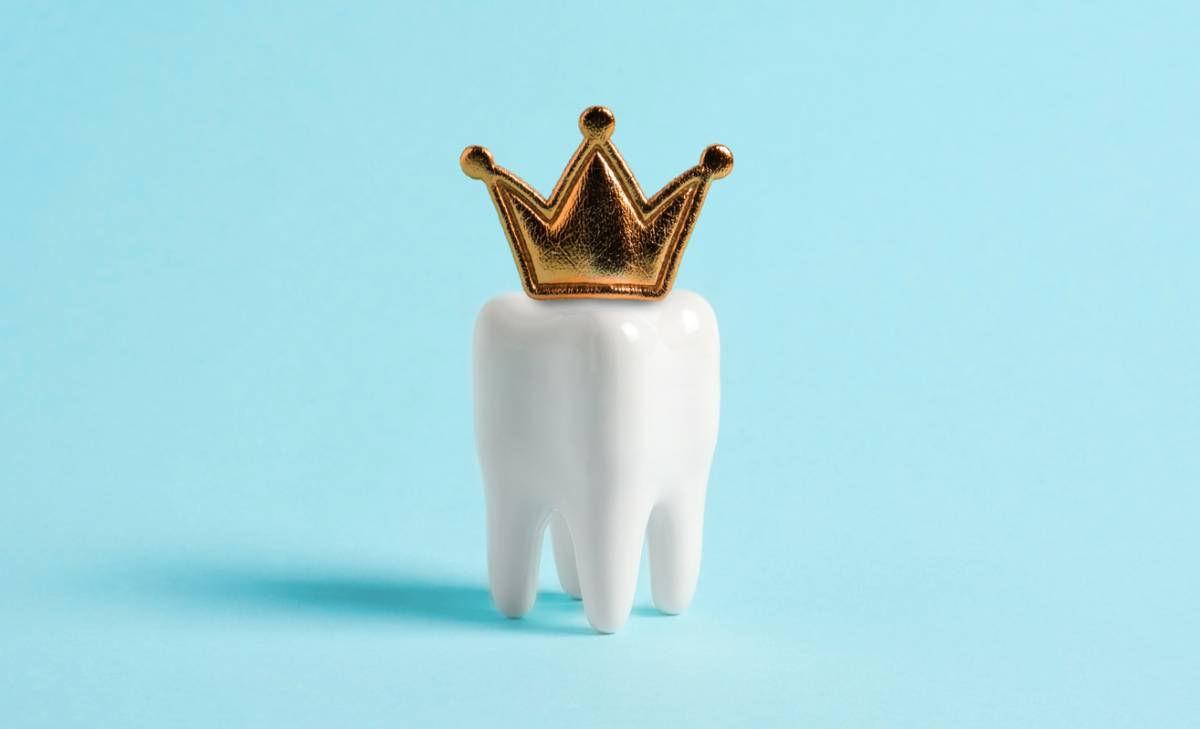Dental crowns are used to restore damaged teeth, protect weak teeth, or improve their appearance. Dental crowns are securely bonded with your teeth using special dental bonding material. They function and look just like your natural teeth and typically serve for 10 to 15 years. Below, we cover our top 6 signs to replace dental crowns.
Top 6 Signs to Replace Dental Crowns
Dental crowns will inevitably wear out with time and constant use. Their durability and lifespan depend on the material your dental crowns are made of and on your lifestyle and hygiene habits. In this article, we will list the top 6 signs to replace dental crowns.
Toothache or Pain in Gums
When the function of your dental crowns starts to fail, it can cause toothache or sensitivity. You might experience pain when drinking hot or cold beverages or when pressure is applied to the tooth while chewing, brushing, or flossing.
Another sign that your dental crown is due to replacement is redness, swelling, or pain in the gum tissue around the crown. These symptoms can occur on their own or together with toothache or tooth sensitivity.
The reason for the symptoms above might be a compromised integrity of the dental crown. Bacteria can start collecting underneath the crown causing gum infections, tooth decay, and gum disease. These are serious issues that have to be attended to in a timely manner, so make an appointment with your dentist as soon as you start experiencing the symptoms. In some cases, there is a need for root canal treatment before the crown can be restored.
Bad Breath
Bacteria, tooth decay, and infections under the crown that has to be replaced can lead to persistent bad breath that does not go away with brushing your teeth.
Your Dental Crown Is Chipped or Fractured
Factors that can lead to your crown being damaged include:
- Facial trauma
- Teeth grinding and clenching habits
- Using your teeth as tools
- Briting with excessive force on hard food or other objects
If your dental crown is physically damaged, its protective function is most likely compromised, which means that it is due to replacement. In some cases, however, minor damages might be repaired without replacement of the crown. Only your doctor can determine what is the best course of action in your case.
A Receding Gum Line
With time, bacteria and plaque can collect around your dental crown. This can cause gum inflammation and gum disease. Gum disease can lead to gum recession. The danger of gum recession is that the teeth roots can become exposed, and subsequently, to bone loss.
One of the symptoms of gum recession is the space that occurred between the crown and the jaw. These pockets formed underneath dental crowns are dangerous, because they easily trap food debris, and it is very hard to clean them properly. All this can lead to further complications, such as bacterial infections and even tooth loss. That is why it is important to make an appointment with your dental crown specialist as soon as you notice this issue.
There are several periodontal procedures that might help in the case of a receding gum line. When it comes to your dental crown, most likely it will have to be replaced. To get rid of the pockets between the crown and the jaw, your dentist will give you a new crown that will cover the entire tooth.
Your Crown Feels Loose
Over time, the bonding material that attaches the crown to your tooth can weaken leading to the crown being loose. A loose crown poses several problems. Firstly, as it is not secure in its place, some pockets of space between the crown and the tooth might appear. Food debris and bacteria easily accumulate there and lead to infections and tooth decay.
Another issue is that the crown becomes at risk of dislodging completely and falling out. This will leave the tooth that used to be underneath the crown unprotected. On top of that, if it happens while you slip, you risk choking on the crown.
In many cases, a loose crown can be reattached to the tooth. In other cases, especially if the crown is damaged in some way, it might be due for replacement.
Change in Crown Appearance
If you notice that your crown became stained or discolored. It can mean that the coating of the crown is worn off, or that the crown has a lot of micro-abrasions. Apart from that, dark spots can be a sign of an infection or tooth decay underneath the crown. This is a serious matter that has to be addressed as soon as possible. In such cases, the crown has to be removed, and the tooth underneath it has to be treated before the new crown can be placed.
Having Infections, periodontal disease, or tooth decay underneath a dental crown is very dangerous because it can lead to tooth loss, jawbone infection, and abscess. It is always better to deal with a dental issue before it has caused serious complications.
Do not hesitate to sign up for an appointment at Valley Alder family dentistry today. We will make sure that your dental crowns are functional and secure and that your teeth are as healthy as they can be.


